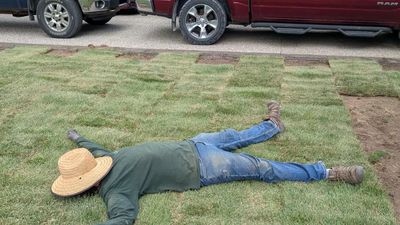Welland Lawn Care Tips: Lessons of the season!

Lessons Learned in Lawn Maintenance: Building a Healthy, Resilient Lawn in Welland, Fonthill and Pel
Maintaining a beautiful lawn is more than just mowing once a week — it’s about understanding what your grass really needs to thrive. Many homeowners overlook key aspects of lawn care until it’s too late, leading to thin, patchy, or pest-infested turf. At Picture Garden Lawn Care, we’ve seen it all — and here are some of the most important lessons to learn when it comes to keeping your grass in great condition.
1. Watering: The Foundation of Lawn Health
Watering is the single most important (and often most misunderstood) aspect of lawn care. A healthy lawn requires deep, infrequent watering, not daily surface sprinkling.
- How often: 1–2 times per week, depending on rainfall.
- How much: About 1 to 1.5 inches of water total per week.
- Best time: Early morning (before 10 a.m.) — watering at night promotes fungus and shallow roots.
- Additionally, watering in peak summer heat is inefficient as you'll experience tons of wasted water from evaporation. HOWEVER, in the event you're looking to establish new sod or seed in those summer months, that cost MUST BE PAID!
Without proper watering, lawns become drought-stressed, turn brown prematurely, and are far more susceptible to pests like grubs and diseases.
2. Grub Control: Welland, The Enemy Beneath the Surface
Even the best-looking lawn can be destroyed from below by grubs — the larvae of beetles that feed on grass roots. Signs of grub damage include soft, spongey turf and brown patches that peel back easily.
Lesson learned: Regular maintenance isn’t just about appearance — it’s about protection. Applying preventative grub treatments in late spring or early summer can stop infestations before they begin. Once grubs take hold, it can take an entire season to restore the damage.
3. Fertilizing: Feeding for Strength and Color
Many homeowners skip fertilization, assuming grass will take care of itself. Unfortunately, that’s rarely true. Grass needs a balanced diet to stay lush, green, and strong.
A seasonal fertilization plan helps your lawn:
- Recover from stress and drought.
- Grow thicker and crowd out weeds.
- Develop deeper, more resilient roots.
Even just two to three treatments per year can make a massive difference in appearance and health.
4. Dethatching: Removing the Barrier to Growth
Thatch is a layer of compacted organic material that builds up between the soil and the grass blades. A small amount is healthy, but too much suffocates your lawn — blocking water, air, and nutrients from reaching the roots.
Lesson learned: Regular dethatching (usually in spring or fall) allows your grass to breathe again and promotes fresh, healthy growth.
5. Aeration: The Secret to a Strong Root System
Compacted soil is one of the most common problems in residential lawns, especially those with heavy foot traffic. Core aeration relieves this compaction by pulling small plugs from the soil, allowing oxygen, water, and nutrients to reach the root zone.
Lesson learned: Aerating once or twice a year improves drainage, enhances fertilizer efficiency, and encourages strong, deep root development — the true foundation of a healthy lawn.
6. Consistency Over Perfection
Perhaps the most important lesson of all: lawn care isn’t about quick fixes — it’s about consistency. Regular mowing, watering, and seasonal maintenance like aeration, fertilization, and grub control build a lawn that lasts for years.
Even the most damaged lawn can recover with consistent care and a bit of patience.
In conclusion

A healthy lawn isn’t built overnight, but with the right approach — and attention to the lessons above — it’s entirely achievable. Understanding the importance of watering, feeding, aerating, and protecting your turf makes all the difference.
If your lawn needs a fresh start or year-round maintenance, Picture Garden Lawn Care can help create a plan tailored to your property’s needs.
This website uses cookies.
We use cookies to analyze website traffic and optimize your website experience. By accepting our use of cookies, your data will be aggregated with all other user data.